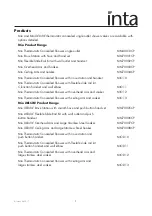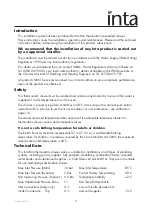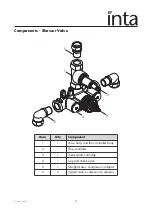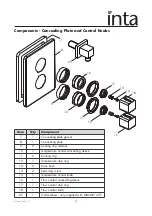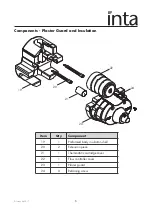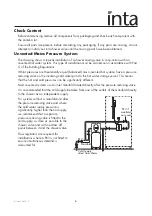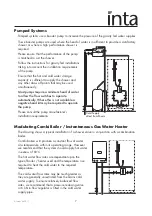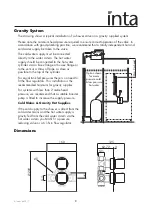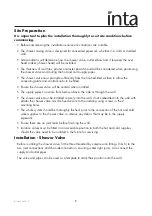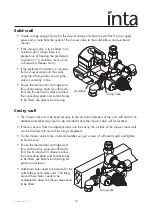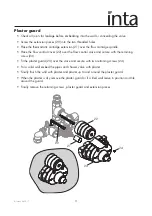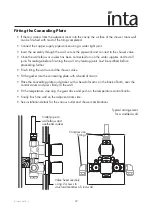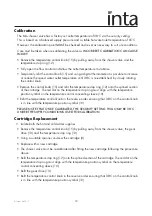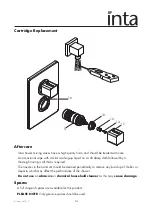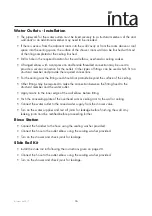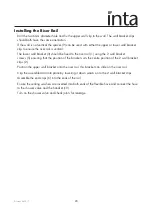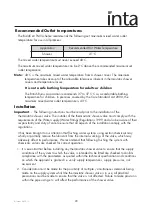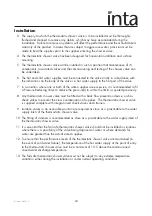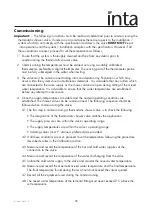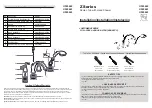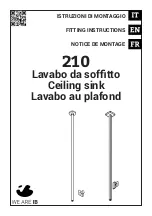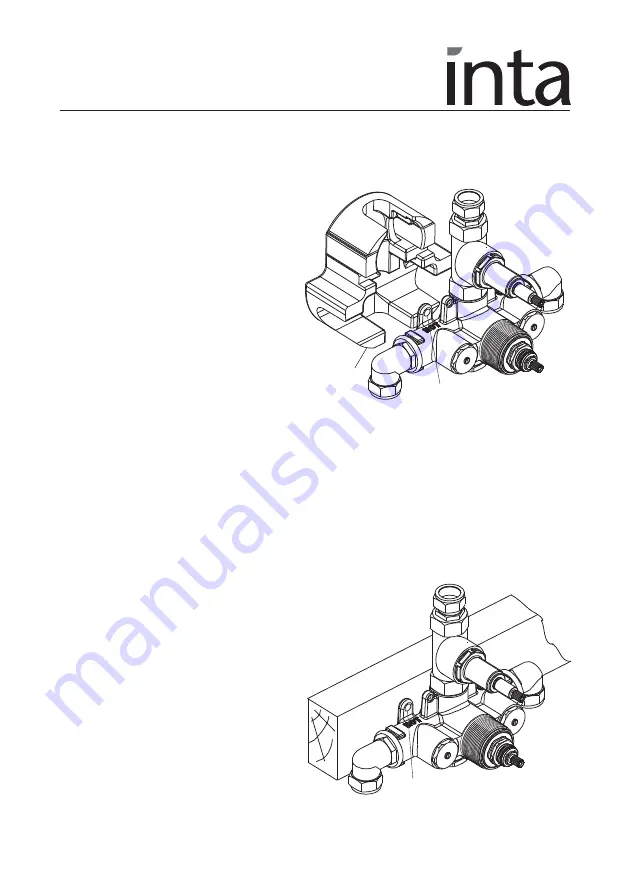
© Intatec Ltd 2017
10
Solid wall
• Create a large enough cavity for the shower valve and chase the wall for the two supply
pipes and a route from the outlet of the shower valve to the outlet elbow and overhead
shower.
• If the shower valve is to be fitted in an
outside wall or where there is a
greater risk of freezing the preformed
insulation (17) should be used, which
will require a deeper cavity.
• If the preformed insulation is not used,
fix the shower valve into the cavity
using the 2 fixing holes ensuring the
valve is vertically in line.
• Ensure the thermostatic cartridge and
flow control valve protrude sufficiently
from the finished wall surface to allow
the concealing plate and control knobs
to be fitted, see dimension drawing.
Cavity wall
• The shower valve must be fixed securely to the structural members of the stud wall and/or an
additional member may need to be included where the shower valve will be located.
• If there is access from the adjacent room into the cavity, the surface of the shower room wall
can be finished with most of the tiling completed.
• Fix the shower valve to the structural member using 2 screws of sufficient length and tighten
to hold secure.
• Ensure the thermostatic cartridge and
flow control valve protrude sufficiently
from the finished wall surface to allow
the concealing plate and control knobs
to be fitted, see dimension drawing for
protrusion distance.
• Additional holes need to be made for the
outlet elbow and soaker arm. The tiling
around these holes needs to be
completed to allow the these components
to be fitted.
Fixing hole
Insulation
Fixing hole


